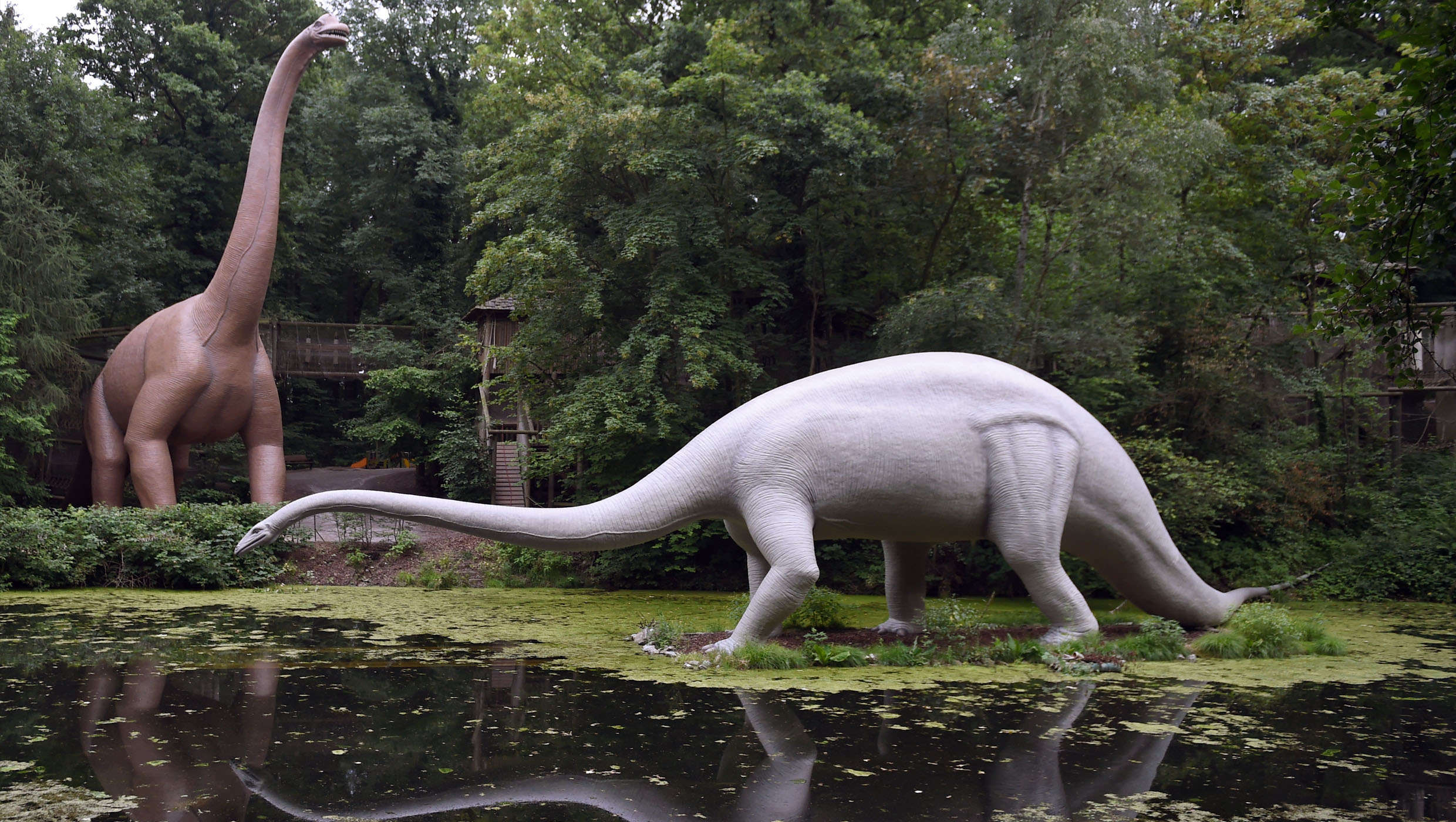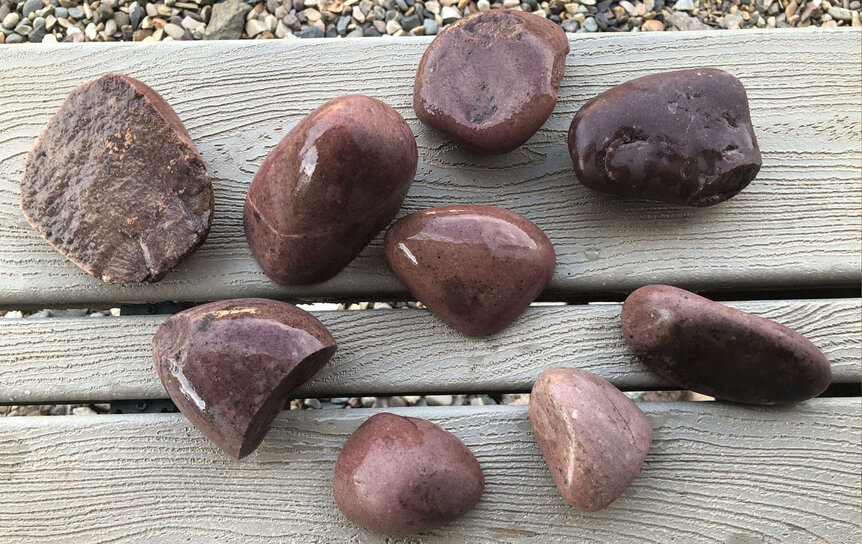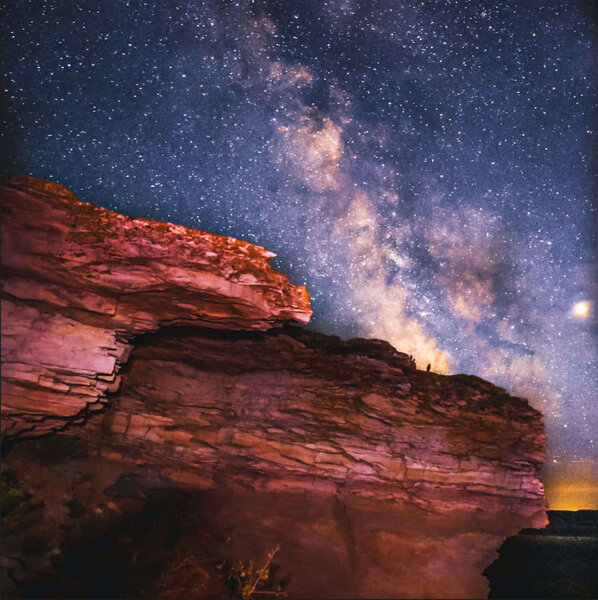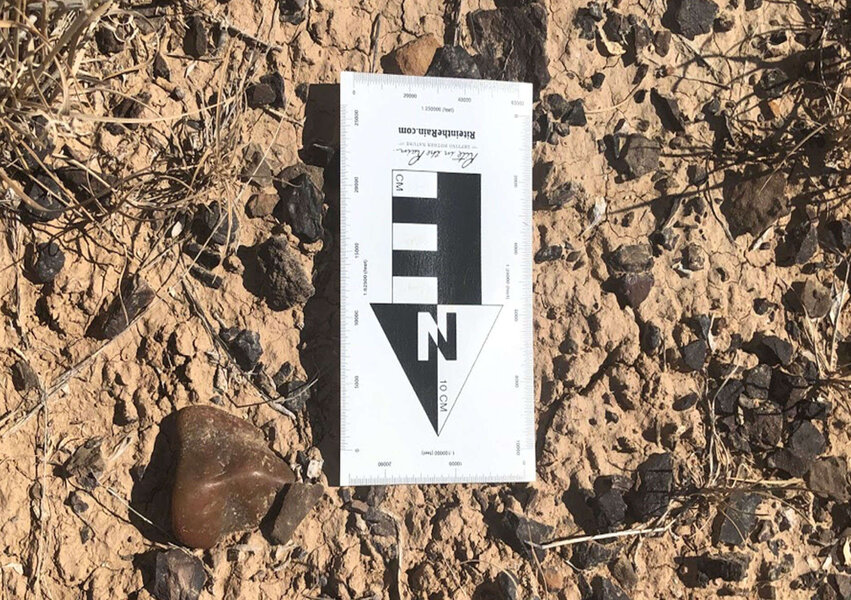Create a free profile to get unlimited access to exclusive videos, sweepstakes, and more!
Swallowed rocks just about prove that 'long neck' dinosaurs really did migrate

For anyone who’s ever seen The Land Before Time, talking dinosaurs never existed, but the Great Longneck Migration isn’t entirely fiction.
Until now, little has been known about whether such enormous creatures as Brontosaurus and other “long necks,” as Little Foot would say, migrated. It must have sounded like rolling thunder to any other creatures nearby. Mysterious rocks scattered around the late Jurassic Morrison formation in Wyoming’s Bighorn Basin Known somehow made it over there from Wisconsin — and it wasn’t aliens, but dinosaurs.
Known as gastroliths, the pieces of pink quartzite have revealed that long-necked sauropods most likely swallowed them (maybe to grind the tough plant matter they ate) as they migrated to their own Great Valley. Researcher Michael D'Emic, recently coauthored a study in Terra with Joshua Malone, who first discovered the gastroliths, and other colleagues, and is excited to have unearthed something so elusive.
“Rarely in the fossil record, and essentially never when it comes to dinosaurs, can we tell which individuals belonged to which populations,” D'Emic told SYFY WIRE. "A large part of the hurdle in understanding migration is that it is something that happens on such short timescales (seasons) and within populations. Now, even in relatively well-explored places like North America, new species and ever-larger sample sizes of other species are being discovered."
Before Wyoming or Wisconsin or humans were ever a thing, what is now North America and parts of Europe made up the paleocontinent of Laurentia. This was where many of Little Foot’s relatives roamed. The Baraboo Quartzite, where they are thought to have started their journey to the region that would end up being Wyoming, is much older than any dinosaur — which could have made it seem as if dinos traveled backwards through time if it wasn’t for modern technology.
Around a billion years ago, ancient rivers flowed into shallow Precambrian seas, taking grains of sand with them. That sand formed sandstone, which, under great heat and pressure, morphed into quartzite. Seas eventually gushed back into the quartzite formation, burying it in sand until the water finally retreated and exposed the rock again. Jurassic sauropods eventually took advantage of it.
Sauropods were herbivores that ate mostly leaves. Some of those whose bones were found in the Morrison formation, like Diplodocus, Barasaurus, and Camarasaurus had evolved freakishly long necks that helped them reach the tops of the trees where species with shorter necks couldn’t compete. Such large animals would have eventually depleted seasonal plants in one region and needed to keep on moving if they wanted to eat.
While the reason these dinosaurs swallowed rocks has not been proven, they might have given them an assist with digesting tough, fibrous plant matter. Gastroliths are much more common in sauropods than carnivorous theropods because of this. The only other monstrous dinosaur found at the Morrison formation was Allosaurus, and sauropods far outnumbered them.
The herd had to follow the trees and other plants if they wanted to keep eating. Somehow, they followed them all the way to Wyoming. Malone ground up the quartzite to find zircon that could give away the age of the gastroliths. Zircon is so tough that it can survive almost anything that hits Earth, even the fatal asteroid that meant the dinosaurs’ demise. Zircon crystals grow rings much like tree rights, which are evidence as to what geologic phenomena they went through, while the core is a time capsule for when they first formed.
"The technique is a type of Uranium-Lead geochronology, using a method called laser ablation–inductively coupled plasma mass spectrometry," D'Emic explained. "Because both the rate of decay from uranium to lead and initial composition of the grains are known, the time it took to produce the lead can be calculated--this is equivalent to the age of the grain."
Gastroliths had to be crushed to get the component grains to expose the zircons, which were then sorted by toxic heavy liquids and magnets. Mass spectometery then measured the ratio of uranium isotopes to lead isotopes in the resulting grains. Sure enough, they as old as the Baraboo formation, which is where the confusion started. No rivers that could have carried the rocks flow directly from there to the Bighorn Basin. Because the gastroliths were too heavy for existing rivers in the area to have carried such a long distance, it was eventually determined that the only method of transportation could have been a dinosaur. This migration involved many dinosaurs.
“Because these dinosaurs were so abundant and tremendous in size, large herds of them would mean lots of gastroliths, even if only a few were accidentally ingested by each individual in their lifetime,” D'Emic said.
With all the evidence possible except an actual dinosaur skeleton preserved with gastroliths where the stomach would have been, this is the closest we can get to actaully watching a majestic herd of long-necks reaching the end of their journey. D'Emic, however, does not see this as the end.
"There are many examples of gastroliths found inside the ribcages of dinosaurs and other fossil animals," he said. "It would be fascinating to do a similar study on gastroliths found within ribcages, although this would mean the complete destruction of any analyzed stone."
Even with further studies on the horizon, it really was as if Little Foot had found the Great Valley for real.

















